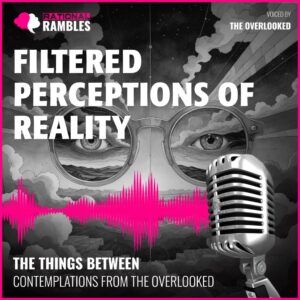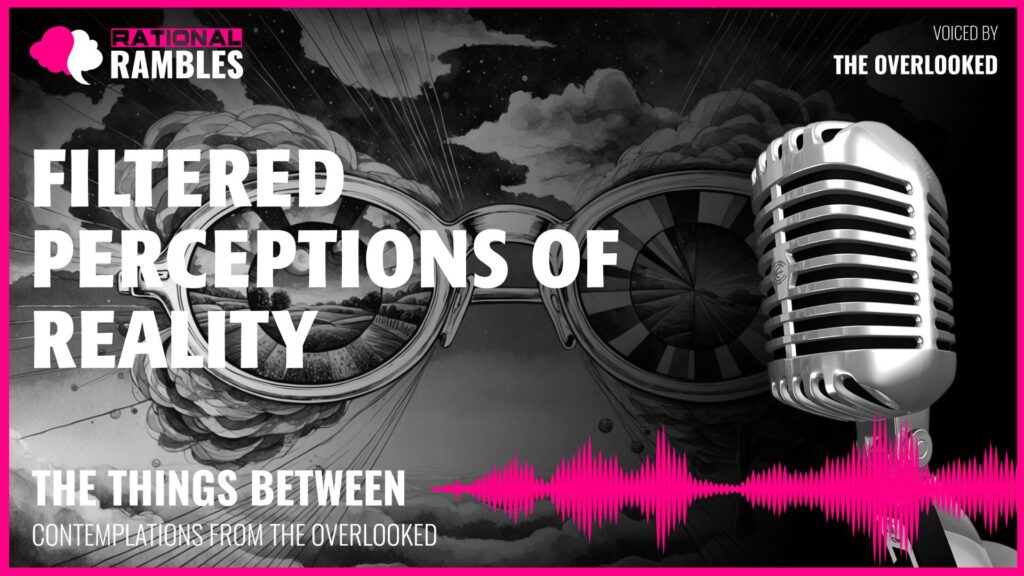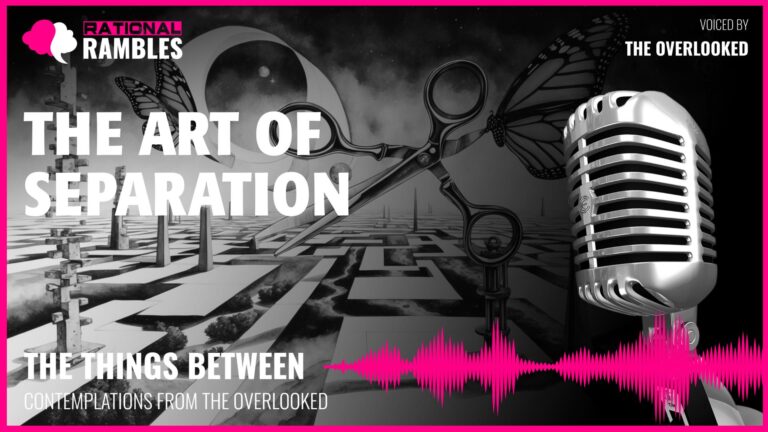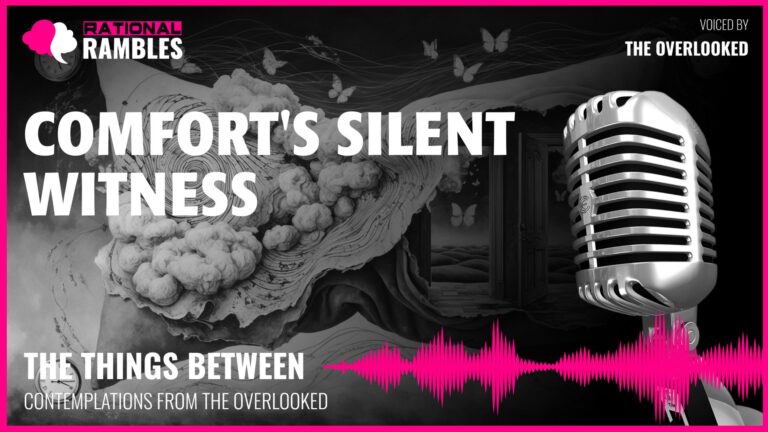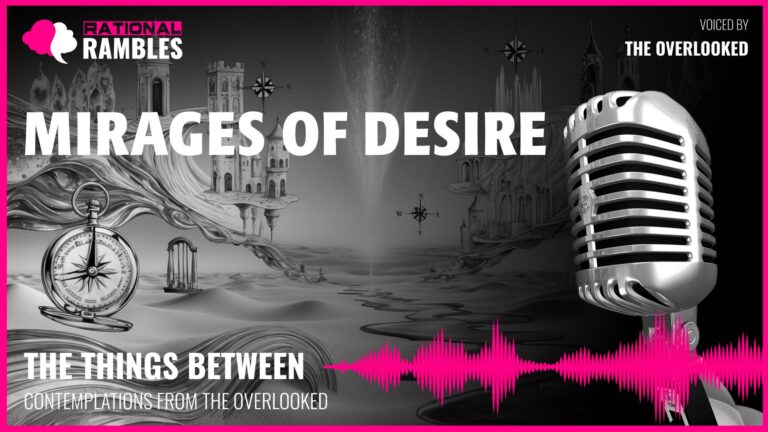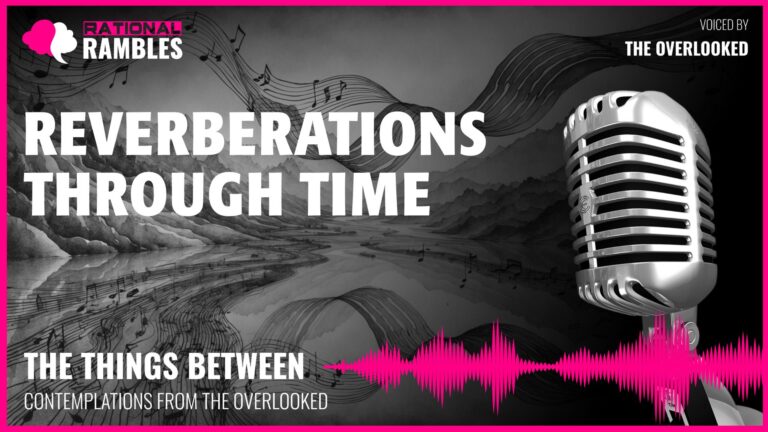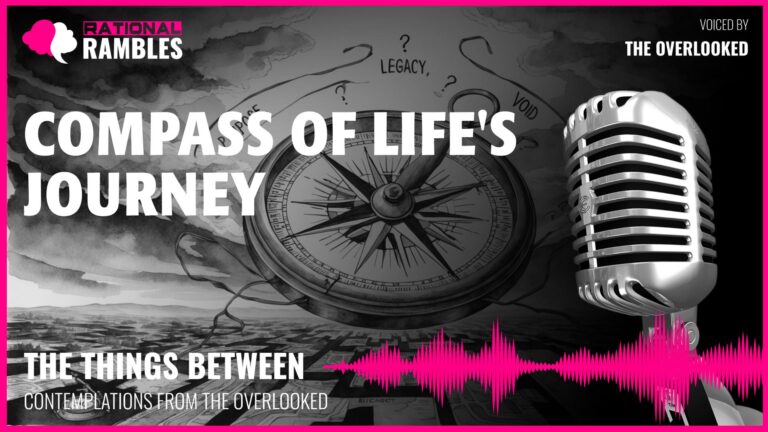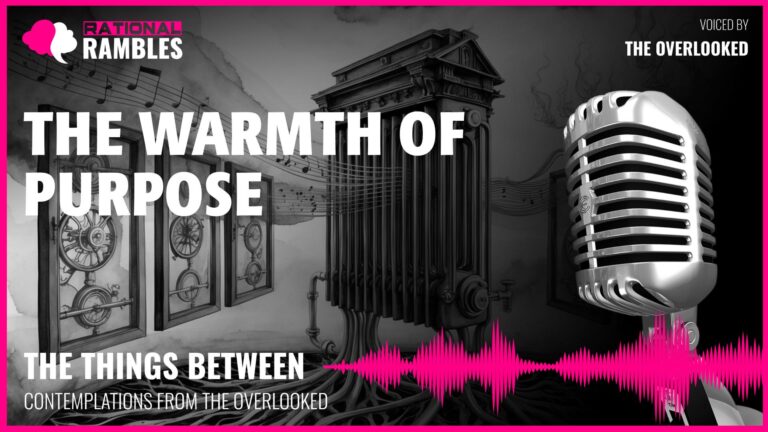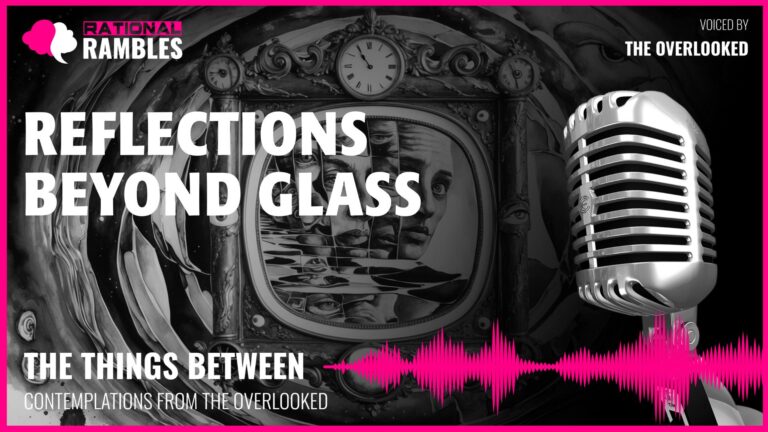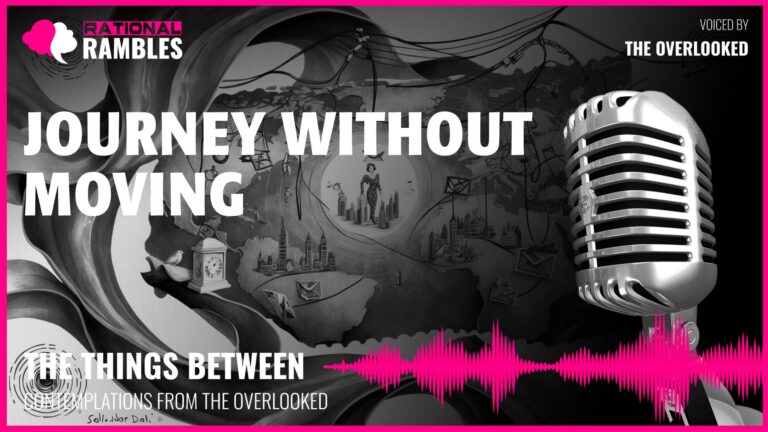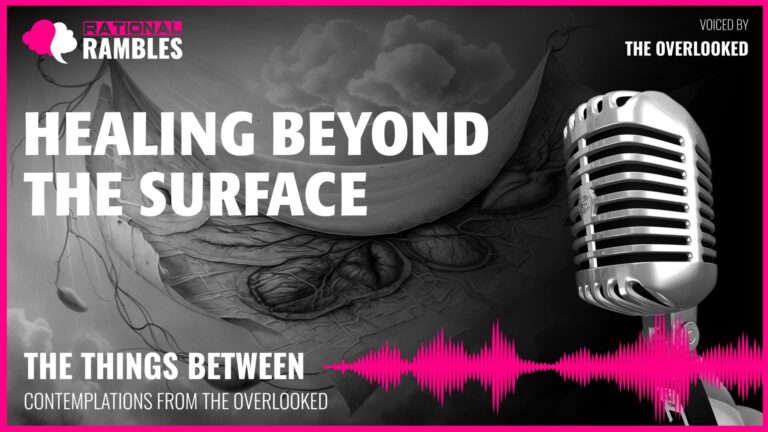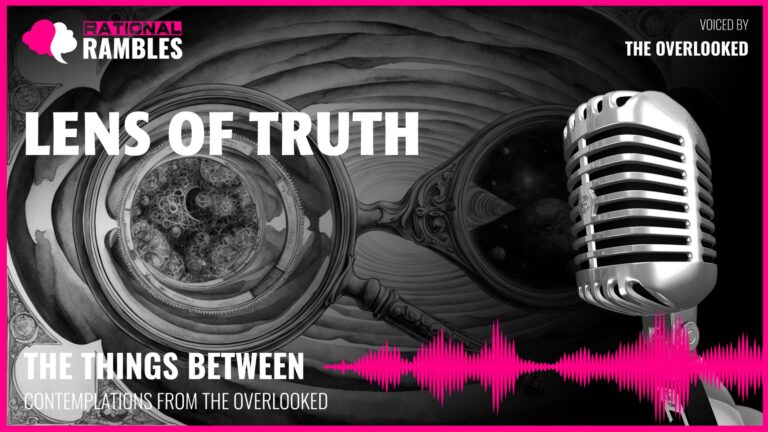Filtered Perceptions: The Mediating Lens of Human Experience
Introduction
Between raw reality and conscious experience lies a space filled with filters, interpretations, and mediations that fundamentally transform our perception of the world. Each of us experiences reality not as it objectively exists, but through layers of physiological, psychological, cultural, and conceptual lenses that simultaneously reveal and conceal, protect and distort. This philosophical exploration examines the nature of filtered perception and its implications for our understanding of reality, truth, and human experience.
The metaphor of filtration serves as a powerful conceptual framework for understanding how we relate to the world around us. Just as physical filters remove certain elements while allowing others to pass through, our perceptual systems, cognitive frameworks, and cultural contexts filter the overwhelming complexity of reality into manageable, meaningful experience. These filters are neither neutral nor static; they adapt to circumstances, bear the marks of past experiences, and vary significantly between individuals and across cultures.
This article investigates several key philosophical questions: How do our perceptual filters shape our understanding of reality? What is gained and lost through filtered experience? Can we ever access unfiltered reality, or is all perception necessarily mediated? What is the relationship between protection and deception in our filtered worldviews? And ultimately, how might we cultivate awareness of our filters to develop more nuanced, flexible relationships with reality?
The Ontology of Mediated Experience
At the most fundamental level, human perception operates through selective attention to stimuli. Our sensory organs themselves function as primary filters, detecting only specific ranges of electromagnetic radiation, air pressure waves, and chemical signatures. What we call visible light, for instance, represents merely a narrow band of the electromagnetic spectrum. The constraints of our biological architecture establish the first boundary between the world as it exists and the world as we experience it.
The Inevitability of Filtration
The philosopher Immanuel Kant recognized this fundamental mediation in his distinction between noumena (things-in-themselves) and phenomena (things-as-perceived). For Kant, the human mind necessarily imposes structures on raw sensory data—concepts of space, time, causality—that make experience possible while simultaneously preventing direct access to reality’s true nature. We cannot step outside our perceptual frameworks to encounter the world as it exists independent of observation.
This Kantian insight finds scientific expression in contemporary neuroscience. Neurobiologist David Eagleman describes the brain not as a passive receiver but as an active constructor of reality, one that edits, processes, and transforms incoming sensory information before it reaches conscious awareness. What we experience as immediate perception is in fact the end product of complex filtering processes occurring beneath the threshold of consciousness.
The Paradox of Reduction and Revelation
Intriguingly, filtration often enhances certain aspects of experience precisely by reducing others. Consider how polarized filters reduce glare by blocking scattered light waves, allowing observers to see beneath the surface of water. This exemplifies a philosophical paradox: sometimes clarity comes through reduction, not addition. By limiting what passes through, filters can reveal what would otherwise remain obscured.
This principle extends beyond visual perception. In cognitive domains, frameworks and paradigms function similarly—by excluding certain interpretations and possibilities, they bring others into sharper focus. Scientific theories, for instance, gain explanatory power by selecting specific aspects of phenomena for attention while filtering out others as irrelevant. This selective emphasis is both their strength and limitation.
The philosopher Michael Polanyi articulated this through his concept of “tacit knowledge,” arguing that all knowing involves a form of filtering—attending to certain aspects while necessarily relegating others to the background. For Polanyi, this structure of attention is not a flaw but the very condition of meaningful knowledge. We understand by selecting, emphasizing, and filtering.
Epistemic Implications: Truth Through Tinted Lenses
If all perception is filtered, what becomes of truth? Can we speak meaningfully about objective reality? These questions have profound implications for epistemology—the philosophical study of knowledge and its limits.
The Spectrum of Epistemological Positions
Philosophical traditions have responded differently to the challenge of filtered perception. At one extreme, naive realism maintains that our perceptions provide direct, unproblematic access to an independent reality. At the other, radical constructivism suggests that what we call “reality” is entirely constructed through our perceptual and conceptual frameworks, with no meaningful access to an objective world beyond interpretation.
Between these poles lies critical realism, which acknowledges the filtered nature of perception while maintaining that our experiential frameworks can progressively approximate reality. On this view, while we never perceive reality directly, our perceptual systems evolved to track relevant features of the environment with reasonable accuracy. Our filters may be imperfect, but they are not arbitrary—they evolved to help us navigate an independent world.
Multiple Perspectives and Epistemic Humility
The recognition that perception is filtered suggests an important epistemic virtue: humility about the completeness of any single perspective. As philosopher Thomas Nagel argues in his famous essay “What Is It Like to Be a Bat?”, the subjective character of experience means that even scientific objectivity cannot capture the totality of reality. Other modes of perception—whether those of different species, different human cultures, or different individuals—may reveal aspects of reality inaccessible from our particular vantage point.
This insight invites a plural approach to knowledge that values diverse perspectives not merely for ethical reasons but for epistemic ones. Different perceptual filters reveal different aspects of reality. The philosopher Nelson Goodman captured this in his concept of “world-making,” suggesting that we inhabit not a single world differently interpreted, but multiple worlds constituted through different systems of description and categorization.
The Gradual Nature of Perceptual Transition
Just as physical filters often create gradual transitions rather than sharp boundaries, human perception typically operates along continuums rather than through binary distinctions. Our conceptual categories, despite their apparent discreteness, reveal themselves upon closer inspection to have fuzzy boundaries and gradient properties.
Ludwig Wittgenstein’s concept of “family resemblances” captures this feature of human categorization, observing that what unites items within a category is often not a set of necessary and sufficient conditions but overlapping similarities that create transitions rather than hard borders. This gradual, spectrum-like quality of human perception challenges philosophical traditions that rely on sharp dichotomies and suggests that reality rarely has the clean edges our conceptual filters sometimes impose upon it.
The Ethics and Aesthetics of Filtered Experience
Beyond epistemological concerns, filtered perception raises ethical and aesthetic questions about how we should relate to our perceptual frameworks and what constitutes good or beautiful filtration.
Protection Versus Deception
Filters serve dual purposes: they protect by reducing potentially overwhelming input, but this same reduction can deceive by presenting a partial view as complete. This tension raises ethical questions about when filtration is beneficial and when it becomes problematic. Some filtering processes protect us from harmful stimuli—both physical, like ultraviolet radiation, and psychological, like the overwhelming complexity of sensory input. Yet these same protective mechanisms can shield us from truths we might benefit from confronting.
The philosophical tradition of stoicism recognized this ambivalence. Epictetus emphasized that emotional distress comes not from events themselves but from our judgments about them—essentially, our perceptual filters. For stoics, wisdom involves cultivating filters that distinguish between what we can and cannot control, focusing attention on the former while accepting the latter. This suggests an ethical criterion for evaluating filters: do they help us engage effectively with reality, or do they primarily serve to shield us from truths we find uncomfortable?
The Integration of Function and Beauty
Filtered perception often integrates functional and aesthetic dimensions. Our perceptual frameworks don’t merely help us survive; they shape how we experience beauty, meaning, and value. This integration challenges philosophical traditions that sharply separate the practical from the aesthetic, suggesting instead that these domains are fundamentally interconnected.
John Dewey’s pragmatist aesthetics captured this integration, rejecting the compartmentalization of experience into separate categories like “practical” and “aesthetic.” For Dewey, aesthetic experience represents not a separate domain but an intensification and fulfillment of ordinary experience. Our filters can simultaneously serve practical purposes while shaping qualitative aspects of experience—how it feels to perceive, not just what is perceived.
The Ethics of Perspective Taking
Recognition that perception is filtered creates ethical imperative to consider how others might experience reality through different perceptual frameworks. The philosopher Emmanuel Levinas emphasized the ethical demand placed on us by encountering others whose experience we cannot fully access or comprehend. The very opacity of others’ perceptual worlds creates responsibility to acknowledge the limitations of our understanding.
At a social level, this suggests the importance of what philosopher Miranda Fricker calls “epistemic justice”—fairly evaluating the knowledge claims of those whose perceptual frameworks differ from dominant or privileged perspectives. If all perception is filtered, epistemic humility requires taking seriously the possibility that marginalized perspectives might reveal aspects of reality obscured by more dominant filters.
The Temporality of Filtered Perception
Our perceptual filters exist not only in space but in time. They bear the marks of past experiences, adapt to changing circumstances, and anticipate future needs. This temporal dimension adds crucial complexity to understanding filtered perception.
The Accumulation of Experiential Marks
Just as physical filters accumulate scratches and smudges through use, our perceptual frameworks bear traces of past encounters. Experiences leave their mark, altering how we subsequently perceive. Trauma, for instance, can fundamentally reshape perceptual filters, heightening sensitivity to potential threats while potentially dulling awareness of safety cues. Less dramatically, all significant experiences subtly recalibrate our perceptual systems, priming us to notice patterns similar to those encountered before.
The philosopher Hans-Georg Gadamer described this phenomenon through his concept of “historically effected consciousness” (wirkungsgeschichtliches Bewusstsein). For Gadamer, we never approach new experiences with completely fresh perception; rather, our understanding is always already shaped by the effects of history operating through us. Our filters bear the accumulated wisdom and limitations of past experience, creating what he called our “horizon of understanding.”
Adaptation and Perceptual Flexibility
Despite being shaped by the past, our perceptual filters demonstrate remarkable adaptability. When circumstances change, we adjust—sometimes gradually, sometimes rapidly. Consider how the eye adapts when moving from darkness to bright light. Initially overwhelmed, it quickly adjusts its sensitivity to function effectively in the new environment.
This adaptability extends to conceptual and cultural filters as well. Thomas Kuhn’s analysis of scientific revolutions describes how, in periods of crisis, scientists may undergo perceptual shifts that allow them to see familiar phenomena in radically new ways. What was once background becomes foreground; what was once obvious becomes questionable. These perceptual revolutions require time and effort—transition between filtered and direct experience demands adaptation.
William James captured this temporal dimension in his concept of “selective attention,” noting that what we perceive depends not only on what stimuli are present but on what we’re prepared to notice based on past experience and current expectations. Our perceptual filters are not static but dynamically responsive to changing circumstances and needs.
The Finitude of Perceptual Systems
The temporal nature of filtered perception reminds us of its ultimate finitude. All perceptual systems eventually break down or become obsolete. Individual human perception ends with death; cultural perceptual frameworks transform or disappear with changing social conditions. This awareness of finitude raises questions about whether the temporal limitations of our filters diminish or enhance their present significance.
Philosophers in the existentialist tradition have suggested that finitude is not a limitation but the very condition of meaning. For Martin Heidegger, human existence (Dasein) is characterized by “being-towards-death”—an awareness of temporal limitation that creates the possibility of authentic engagement with life. Similarly, our awareness that perceptual frameworks are temporary may intensify rather than diminish their present significance, highlighting the importance of how we choose to filter experience in the limited time available to us.
Identity and Filtered Perception
Our perceptual filters are inextricably connected to our sense of identity—both personal and collective. They shape how we understand ourselves and our relationships with others, while simultaneously being shaped by our identities.
The Dialectic of Self and Filter
There exists a complex dialectic between who we are and how we perceive. Our identity influences what we notice, what we value, and what we dismiss, while these perceptual habits simultaneously reinforce and constitute our sense of self. We become, in part, the consistent patterns of our attention—what we habitually filter in and what we filter out.
The philosopher Charles Taylor articulates this connection in his concept of the “self-interpreting animal.” For Taylor, human identity is constituted through the interpretive frameworks we use to make sense of our experiences and values. These frameworks function as perceptual filters, highlighting certain aspects of experience as significant while relegating others to the background. Our identity is not separable from these interpretive filters; rather, it emerges through them.
Social Identity and Shared Filters
Many of our most powerful perceptual filters are not individual but collective—shaped by shared language, culture, and social position. As Ludwig Fleck observed in his analysis of “thought collectives,” what scientists are capable of perceiving is profoundly influenced by their participation in specific scientific communities with shared conceptual frameworks and observational practices.
This social dimension of filtered perception explains why individuals occupying different social positions often perceive the same situations differently. Standpoint epistemology, developed by philosophers like Sandra Harding and Patricia Hill Collins, argues that marginalized social positions can generate distinctive perceptual frameworks that reveal aspects of reality obscured from more privileged vantage points. These collective filters don’t simply distort perception but enable particular forms of understanding unavailable to those outside the relevant social experience.
Personal Transformation Through Perceptual Shifts
Significant personal transformation often involves shifts in perceptual filtering. Spiritual traditions have long recognized this, developing practices specifically designed to alter how practitioners perceive reality. Buddhist mindfulness practices, for instance, aim to suspend habitual perceptual filters to experience phenomena without immediate conceptual overlay. Similarly, phenomenological reduction as described by Edmund Husserl involves bracketing ordinary assumptions to perceive phenomena freshly.
These traditions suggest that while we cannot eliminate filtering entirely, we can develop greater flexibility and awareness in how we filter. The philosopher Iris Murdoch described moral development not primarily as a matter of will or action but of attention—learning to see others and the world more clearly by suspending self-centered perceptual filters. On this view, ethical growth involves perceptual transformation, cultivating filters that reveal rather than obscure moral reality.
The Value of Perceptual Diversity
If all perception is filtered, and no single perceptual framework captures reality completely, then perceptual diversity becomes not merely a social fact but an epistemological and ethical resource. Different ways of filtering experience reveal different aspects of reality, creating the possibility of more comprehensive understanding through plurality.
Neurological Diversity as Perceptual Opportunity
Conditions often characterized primarily as disorders or disabilities can be understood alternatively as different perceptual filtering systems. Autism spectrum conditions, for instance, may involve distinctive perceptual filtering that attends to details often filtered out by neurotypical perception. As autism rights advocate Temple Grandin has argued, these perceptual differences can yield valuable insights and capabilities inaccessible to those with more typical perceptual filters.
This perspective challenges purely medical models that treat divergent perceptual filters solely as deficits to be corrected. Without romanticizing difficulties that may accompany perceptual differences, we can recognize that diverse filtering systems expand collective human access to reality. The philosopher Ian Hacking describes this as “making up people”—recognizing how categories themselves help constitute different ways of being human with different perceptual worlds.
Cultural Variation in Perceptual Frameworks
Anthropological research reveals profound cultural variation in perception—not merely in interpretation of perceptual data but in what is perceived in the first place. Language shapes attention, influencing what aspects of experience are foregrounded or backgrounded. Cultures with more precise vocabulary for particular sensory domains often demonstrate enhanced perceptual discrimination within those domains.
The philosopher Charles Taylor calls these culturally-specific perceptual frameworks “social imaginaries”—collective ways of filtering and interpreting experience that make possible particular forms of social life. These imaginaries are neither arbitrary nor deterministic; they evolve in response to practical challenges and environmental conditions while shaping how community members perceive their world.
The Limits of Perceptual Translation
While perceptual diversity creates opportunities for expanded understanding, it also raises questions about the translatability of experience across different perceptual frameworks. Can someone who has never experienced a particular perceptual filtering system truly understand what it reveals? The philosopher Thomas Nagel’s famous question about bat experience applies to human perceptual diversity as well: can we ever know “what it is like” to perceive through radically different filters?
This challenge suggests both epistemic humility and the importance of preserving diverse perceptual traditions. If certain aspects of reality are accessible only through particular perceptual frameworks, then the loss of these frameworks represents not merely cultural but epistemological impoverishment—the elimination of unique windows onto reality.
The Technology of Perception
Humans have continually developed technologies that extend, enhance, or modify our perceptual filters. From simple tools like physical lenses to complex digital systems, these technologies transform not only what we can perceive but how we understand perception itself.
Technological Extensions of Perception
Technologies from microscopes to telescopes extend human perception beyond its natural limits, revealing previously inaccessible aspects of reality. These technological filters don’t simply magnify existing perception but create qualitatively new perceptual possibilities. Through them, we access realms—the microscopic, the astronomically distant, the infrared—that exist beyond unassisted human perception.
The philosopher Don Ihde describes this as “instrumental realism”—the way scientific instruments create new forms of perception that are neither purely objective nor purely constructed, but mediated relationships with reality. These technological extensions simultaneously reveal new aspects of the world while imposing their own characteristic filtering effects, selecting certain aspects of phenomena while excluding others.
Digital Mediation and Its Philosophical Implications
Contemporary digital technologies introduce unprecedented complexity to the filtration of human experience. Algorithms increasingly determine what information reaches us, creating what philosopher Eli Pariser calls “filter bubbles”—personalized informational environments that may reinforce existing perceptual biases while excluding contradictory perspectives.
These algorithmic filters differ from traditional perceptual filters in significant ways: they operate largely outside conscious awareness, they’re controlled by commercial or political entities with specific agendas, and they’re highly responsive to past behavior in ways that can create feedback loops. As philosopher Shannon Vallor notes, these technologies don’t merely extend existing human faculties but potentially transform the structure of perception itself, raising new questions about agency and autonomy in filtered experience.
The Value of Simple Technologies
Despite the proliferation of increasingly complex perceptual technologies, there remains significant value in simpler filtering tools. Technologies that have reached a state of relative stability and transparency—like basic optical lenses—offer important advantages: their filtering effects are well-understood, they maintain user agency and awareness, and they often embody elegant solutions that don’t require constant updates or modifications.
As Albert Borgmann argues in his philosophy of technology, certain technologies maintain a healthy relationship between humans and the world precisely because their operation remains comprehensible and their effects predictable. There’s philosophical wisdom in recognizing when a perceptual technology has reached sufficient development—when additional complexity would diminish rather than enhance its contribution to human understanding.
Developing Perceptual Wisdom
If perception is inevitably filtered, wisdom consists not in eliminating filters but in developing more nuanced, flexible, and self-aware relationships with our perceptual frameworks. This final section explores how we might cultivate such perceptual wisdom.
Awareness of Perceptual Framing
The first step toward perceptual wisdom involves becoming conscious of the frames through which we perceive. Just as we might notice the physical boundaries created by eyeglass frames, we can develop awareness of the conceptual, cultural, and psychological frameworks that shape our perception. This metaperceptual awareness doesn’t eliminate filtering—that remains impossible—but it allows us to recognize that our perspective is partial rather than complete.
Phenomenologists like Maurice Merleau-Ponty emphasized the importance of this awareness, describing how skilled perception involves both immersion in experience and reflective consciousness of how that experience is structured. This dual awareness prevents us from mistaking our filtered perception for unmediated reality while still allowing us to engage meaningfully with the world through our perceptual frameworks.
Cultivating Perceptual Flexibility
Beyond awareness, perceptual wisdom involves developing the capacity to shift between different filtering frameworks as circumstances require. Just as we might select different physical filters for different lighting conditions, we can learn to adopt different conceptual frameworks, emotional registers, or attentional patterns depending on what a situation demands.
The philosopher William James described this as developing a “habitual willingness” to attend differently—to deliberately shift perceptual filters rather than remaining fixed in habitual patterns of attention. This flexibility doesn’t mean abandoning all perceptual commitments but rather holding them provisionally, ready to adopt alternative frameworks when they might reveal important aspects of reality our usual filters obscure.
Regular Perceptual Maintenance
Just as physical filters require regular cleaning to function optimally, our perceptual frameworks benefit from periodic examination and maintenance. This might involve practices like meditation that temporarily suspend ordinary perceptual processing, critical reflection that examines assumptions embedded in our filtering processes, or deliberate exposure to perspectives that challenge our habitual ways of seeing.
The philosopher Martha Nussbaum suggests that literature serves this perceptual maintenance function, allowing us to temporarily inhabit perspectives different from our own and thereby “clean the lenses” of perception. Such practices don’t eliminate the necessity of filtered perception but help prevent our filters from becoming rigid or opaque through the accumulation of unexamined assumptions and habitual patterns.
Balancing Protection and Revelation
Perhaps the deepest perceptual wisdom involves finding an appropriate balance between filtering that protects and filtering that reveals. Too little filtration leaves us overwhelmed by the complexity and intensity of raw experience; too much shields us from potentially transformative encounters with reality. Wisdom consists in developing filters that provide sufficient protection while maintaining openness to what might challenge or transform our existing frameworks.
The philosopher Simone Weil captured this balance in her concept of “attention”—a form of perception that remains receptive to reality while suspending the ego’s tendencies to appropriate or avoid what it encounters. For Weil, this attentive perception represents both an epistemological and spiritual achievement, allowing us to perceive more truly by filtering experience through love rather than self-protection or self-aggrandizement.
Conclusion: Embracing the Paradox of Filtered Perception
Our exploration of filtered perception reveals a fundamental paradox: the very frameworks that make meaningful experience possible also limit and shape what we can perceive. There is no view from nowhere, no perception without perspective. The philosophical implications of this insight are profound, challenging both naive realism that assumes direct access to unfiltered reality and radical relativism that abandons the possibility of meaningful truth.
Instead, filtered perception invites a more nuanced epistemological position—one that acknowledges the partiality of all perspectives while maintaining that our filtering systems can progressively improve in their capacity to reveal reality. We never perceive the world as it is in itself, independent of observation. Yet our perceptual systems aren’t arbitrary; they evolved to track relevant features of an independent reality, and we can refine them through critical reflection, diverse perspective-taking, and attentive engagement.
Perhaps most importantly, recognizing the filtered nature of perception encourages epistemic humility—an awareness that our particular way of seeing reveals some aspects of reality while inevitably obscuring others. This humility need not lead to skepticism or resignation but rather to a more expansive, pluralistic approach to knowledge that values diverse perceptual frameworks precisely because they offer different windows onto a complex, multifaceted reality.
Ultimately, the wisdom of filtered perception lies not in transcending our filters—an impossible aspiration—but in developing more conscious, flexible, and generous relationships with them. We cannot step outside perspective, but we can expand its boundaries, clarify its lenses, and recognize that between ourselves and the world there will always be a mediating presence—both barrier and bridge, both limitation and the very condition of meaningful experience.


